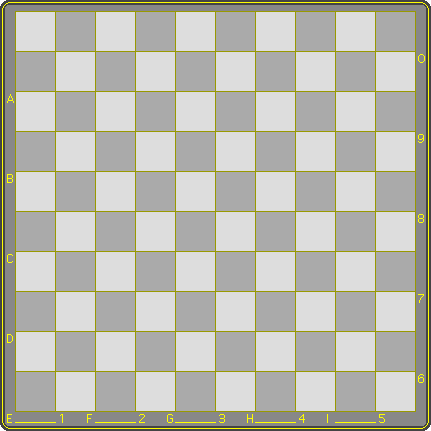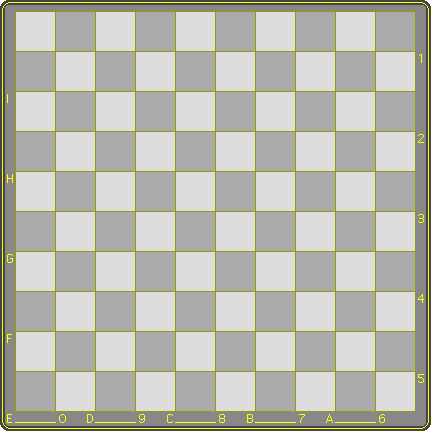Page 2 of 11
CaptureCapture is compulsory. In Bushka all capture is by contact. There are two distinct ways to do this:
- Linear capture means capture with a line of men.
- Piece capture means capture with a man or a king.
- Linear capture precedes over piece capture, even if the latter is a majority capture!
Within each principle, majority capture precedes. - If the player to move can make exactly one linear capture, he must do so. If he can make more than one, he must choose the capture that brings the maximum number of captured pieces. A king counts as one piece. If there is more than one way to meet this criterion, the player is free to choose.
- If the player to move cannot make a linear capture, he must look for a piece capture. If he can make exactly one, he must do so. If he can make more than one, he must choose the capture that brings the maximum number of captured pieces. A king counts as one piece. If there is more than one way to meet this criterion, the player is free to choose.
Linear capture
A line of men makes only one movement in a turn! In a capture, this movement may be forwards or backwards. If the square in front of a line of men is vacant and the square beyond is occupied by an opponent's piece, the line of men captures by approaching one square, 'touching' the piece with its head.
- If the piece is a king, it is therewith captured and removed in the same turn.
- If the piece is a man that is the head of an opposing line of men on the same line, that entire line of men is therewith captured and removed. If it is not the head of an opposing line of men, only the man itself is captured.
| ||||||
Piece capture
Where a linear capture keeps a particular line, a piece capture may not. A piece may capture both forwards and backwards and may change direction as often as is required under the condition of majority capture.
The first condition for making a piece-capture is the absence of a linear capture. A man that is the head of a line of men in a particular direction can therefore never capture as a piece in that direction. Of course the man may be the head of a line of men in one direction, but not so in the perpendicular direction. The man is then called isolated in the latter direction.
- A man can only start a capture in a direction in which it is isolated. Once the capture starts, the man remains isolated by definition for the rest of the turn.
- If a man is isolated on a particular line, and next to it on that line is a vacant square followed by a square occupied by an opponent's piece, then the man captures the piece by making a one step approach onto the vacant square, contacting the piece. Note that a piece captures only a piece, not an entire line of men.
If the man, now isolated by definition, can proceed in a similar way in another direction, including a 180 degrees turn, it must do so, taking care beforehand to establish the route that brings the maximum number of captured pieces. A king counts as one piece.
If there is more than one way to meet this criterion, the player is free to choose. - A king is isolated by definition. It looks along open lines. If it sees, at any distance, an opponent's piece, then the king captures this piece by approaching onto the last vacant square before it, contacting the piece.
If it can proceed in a similar way in another direction, including a 180 degrees turn, it must do so, taking care beforehand to establish the route that brings maximum number of captured pieces.
If there is more than one way to meet this criterion, the player is free to choose. - After - and only after - a multiple capture has taken its complete course, the captured pieces are removed from play.
- In the course of a multiple capture a piece may visit the same square more than once, but it may not capture the same piece more than once.
Draws
The game may end in a draw by 3-fold or mutual agreement.






